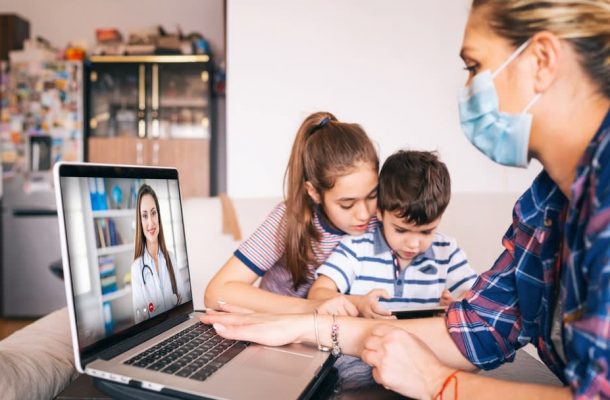While there are still some appointments that are conducted in person, many have moved to telehealth. In some places, telehealth consultations have reportedly surged by 40 per cent.
Telehealth has been around for a while, predominantly in remote areas and residential aged care homes, but it’s never been widespread. Suddenly, healthcare professionals (HCPs) who are used to a waiting room full of people and conducting face-to-face consultations, are navigating assessing and consulting online.
And patients are trying to figure out how it all works, too. With appointments still time-limited, both health professionals and patients need to make some behavioural adjustments to get the most out of their appointments.
Some telehealth consultations don’t work well due to a lack of preparation or a poor set-up. As behavioural researchers, we want others to learn from both of our recent (and not terribly successful) experiences using it.
We believe that with some simple behavioural changes from both patients and practitioners, we could all get much more out of our future online health appointments.
A friendly greeting
Don’t underrate a greeting – it sets up rapport and trust between the HCP and the patient. Now, more than ever, social cues that establish connection are important, so don’t skip this one. For patients, if possible it may be best to book with a HCP you’ve seen before. Having that familiarity with someone, especially with your patient or family history, can help, as less time is needed to collect this information.
Establish expectations
It’s also important to set expectations and highlight limitations upfront. The HCP needs to establish what they’ll be doing in the consultation, and confirm this with the patient. Be explicit about if there’s anything that can’t be achieved in the session because it’s a telehealth consultation.
Manage time, but don’t rush!
Time pressures in the health system have eased, but it’s important not to rush a telehealth conversation. With the absence of in-person cues, listening is more important than ever. It’s an awkward truth that pauses will be inevitable in telehealth. As are interruptions. So leave plenty of time for the other person to speak – accept the pauses and make sure they’ve fully explained themselves before responding.
It’s especially important the HCP listens without interrupting – as it’s more difficult to observe other cues from the patient, they’ll be more reliant verbally on getting all the information they can. Watch the patient closely, look for signs that the patient can hear and is understanding you. Once you’ve finished, confirm that they’ve understood. Speaking slowly, although it may feel odd, can also help.
Room set-up matters
Most HCPs will be set up at work or in a home office of sorts. But patients need to make sure they’re set up properly as well. Find a quiet place where you can have a private conversation, and where there are fewer risks of being interrupted. Notify members of your household that you have a call to try and minimise disruptions. Though this may be less effective with children, set them up with an activity so the chance of interruptions is reduced.
Consider what the HCP may need to see – does your set-up allow you to stand up or move around easily? Your internet connection is also important, so turn off any device using the internet that isn’t needed at the time, and log in a few minutes early to check your video and audio connections. We also learnt that it’s important to know how to turn the camera around so the HCP can see an area of the body (if necessary). Have a pen and paper ready if you need to make notes or jot down questions.
Child telehealth appointments
If the appointment is for a child rather than for you, prep them for how they’ll be seeing the HCP. For older children, this might be explaining what will happen prior to the appointment.
For younger children who have shorter attention spans, have distractions ready, and if they do need to show body parts, make sure the clothes they are wearing are easy to adjust or remove. Also, try to avoid scheduling appointments at the child’s nap time. If routines are predictable, try to work with them rather than against them.
At the end of the appointment
The HCP should give the patient some time to reflect on what has been discussed, check if they’ve understood everything, provide adequate time for questions, and lastly confirm any follow-up actions required.
Telehealth appointments can achieve a lot, but they can also pass very quickly, and with the lack of normal cues that we’re used to in traditional health consultations, important information or questions can be overlooked. So, especially for patients, it’s good to be prepared.
This article was written by Denise Goodwin and Breanna Wright, Research Fellows at BehaviourWorks Australia at the Monash Sustainable Development Institute. It was published by Lens.















